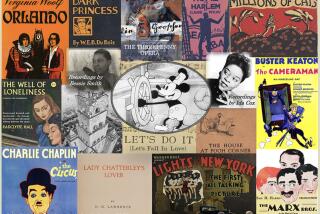U.S. Postal Service unveils series of stamps honoring children’s book ‘The Snowy Day’
The U.S. Postal Service is honoring “The Snowy Day,” one of the most beloved American children’s books of the 20th century, with a series of new postage stamps.
Four new “forever” stamps depicting Peter, the main character of Ezra Jack Keats’ famous book, will be issued on Oct. 4, the Postal Service said in a news release.
“The Snowy Day,” first published in 1962, was one of the first successful picture books for children to feature an African American main character. The book was awarded the Caldecott Medal, which is considered the most prestigious award for picture books, in 1963.
The book, illustrated with a series of collages, follows Peter as he wakes up and finds that snow has blanketed his city overnight. The young boy, dressed in a red snowsuit, explores the winter wonderland, making snow angels and snowballs.
Peter would go on to appear in several more of Keats’ books, such as “Whistle for Willie,” “Peter’s Chair” and “A Letter to Amy.”
Keats was inspired to write “The Snowy Day” by a series of photographs in a 1940 issue of Life magazine depicting a young African American boy. Keats, who was white, had been bothered the lack of African American characters in children’s books.
Deborah Pope, executive director of the Ezra Jacks Keats Foundation, told NPR in 2012 that Keats initially received criticism from civil rights activists for “The Snowy Day,” but also was encouraged by letters he received from children and teachers who loved the book.
“There was a teacher [who] wrote in to Ezra, saying, ‘The kids in my class, for the first time, are using brown crayons to draw themselves,’” she said. “These are African American children. Before this, they drew themselves with pink crayons. But now, they can see themselves.”
The “Snowy Day” stamps are being presold at the USPS website. They will be officially unveiled at a ceremony at the Brooklyn Central Library on Oct. 4.
More to Read
Sign up for our Book Club newsletter
Get the latest news, events and more from the Los Angeles Times Book Club, and help us get L.A. reading and talking.
You may occasionally receive promotional content from the Los Angeles Times.






